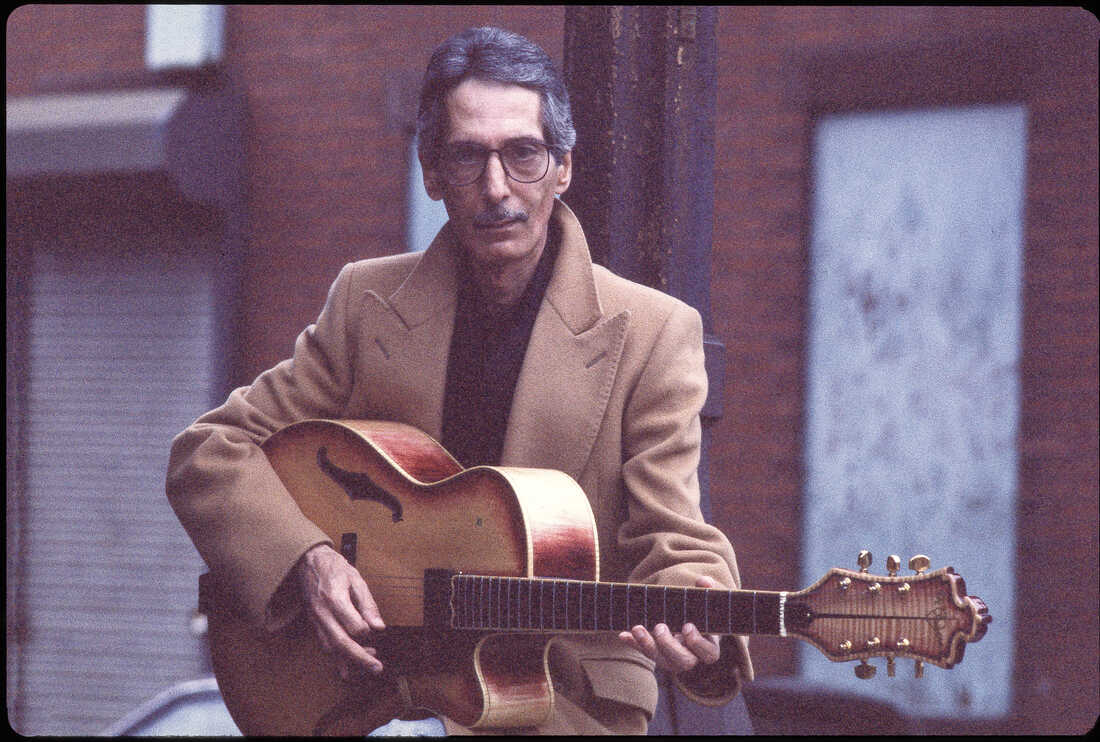
[ad_1]

Pat Martino posing with his guitar in 1994. The celebrated jazz guitarist died Nov. 1 at age 77.
Michel Delsol/Michel Delsol/Getty Images
hide caption
toggle caption
Michel Delsol/Michel Delsol/Getty Images

Pat Martino posing with his guitar in 1994. The celebrated jazz guitarist died Nov. 1 at age 77.
Michel Delsol/Michel Delsol/Getty Images
Pat Martino, a jazz guitarist revered for the fluid precision and blistering speed of his playing — both before and after he was forced to relearn the instrument following a mid-career brain aneurysm — died on Monday. He was 77 years old.
His death was announced on Facebook by his longtime manager, Joseph Donofrio. Martino, born Patrick Azzara, died after a long illness in the South Philadelphia row home formerly owned by his parents, where he moved in 1980 after undergoing neurosurgery that saved his life — at the near-total cost of his memory. The guitarist had been suffering from a chronic respiratory disorder since 2018, breathing with oxygen support and unable to play since a tour of Italy that November. He is survived by his wife, Ayako.
Martino’s career spanned six decades and a variety of styles, from his formative years performing in organ groups to the Wes Montgomery-influenced hard bop of his early recordings, spiritual explorations in the late 60s ceding to the blazing, virtuosic fusion of 1970s classics like Joyous Lake.
Regardless of the setting, Martino played the guitar with an intensity of focus and impeccable clarity at even the most dizzying pace. Always retaining the soul and buoyant groove that he honed at the side of master jazz organists like Charles Earland, Don Patterson and Jack McDuff, Martino melded that profound feel with a rock-fueled ferocity born of a questing spirit rather than aggression.
That evolution was suddenly interrupted in 1980 when Martino suffered the near-fatal seizure that left him to rebuild his memory and his career from scratch. He had been born with an arteriovenous malformation, a condition that had led him to suffer hallucinations and seizures since childhood but remained misdiagnosed.
Martino emerged from the experience with a newfound, Zen-like outlook. In an interview for the Philadelphia Inquirer in 2011, he referred to the experience as “the greatest thing that ever happened to me.” While his philosophical bent was presaged by titles like “Consciousness” and “Where Love’s a Grown-Up God,” the guitarist later viewed the early part of his career as driven more by ambition than art.
“My career literally came to an end at that very moment,” he said of the surgery. “From that point forward, my interest was no longer in my profession; my interest was in survival as a human being. It erased the blackboard, and I found myself in the same position as I was as a child.”
Martino had spent his childhood in South Philadelphia, his father a singer and sometime guitarist who performed in local nightspots. Inspired by Montgomery and Les Paul, Martino began playing guitar at the age of 12, eventually studying with the revered teacher Dennis Sandole, whose students included such future jazz giants as John Coltrane. In his early teens he played with friends like the saxophonist-turned organist Charles Earland and then-drummer, later-pop-idol Bobby Rydell.
Determined to meet his jazz idols, Martino set out for Harlem at the young age of 15 and quickly settled into a busy schedule playing with masters of the Hammond B-3 organ. Traces of those soul-jazz origins can still be heard on the guitarist’s 1967 debut for Prestige, El Hombre, featuring Philly organist Trudy Pitts. The album’s unique lineup finds Martino already pushing into new terrain however, with a guitar/flute out front and a percussion-heavy rhythm section supplying powerful propulsion for the leader’s quicksilver lines.
By the following year he was stretching further into new inspirations, as evidenced by the exploratory Baiyina (The Clear Evidence). The album incorporated instruments and sounds from Indian classical music as Martino forged a kind of impassioned transcendentalism, merging his fervent soloing and muscular swing with meditative drones.
By the mid-’70s, rock and jazz had collided with the birth of fusion — Miles Davis was breaking new ground with his heady electric bands, and groups like Return To Forever and John McLaughlin’s Mahavishnu Orchestra were finding success far beyond jazz audiences. Martino delved into the scene with “Starbright” and the landmark “Joyous Lake,” bolstering his trademark sound with serrated distortion and cosmic synths, placing his meticulous fury in an appropriately electrifying setting.
Following his surgery in 1980, Martino spent several years relearning the instrument, listening back to his own recordings and struggling with depression and the grueling process of recovering his skills. He reemerged in 1987 with The Return, which showcased a miraculous virtuosity seemingly undiminished by his brush with death and amnesia.
Martino continued to tour and record for the next three decades, often playing in hard bop or organ combo settings that harkened back to his early career, while displaying a tasteful mastery reflecting his blissful, in-the-moment outlook. Having recaptured a number of memories in the intervening years, in 2011 he released his autobiography, Here and Now! His last release was the straight-ahead Formidable in 2017.
Martino often spoke in aphorisms, responding to direct questions with a wandering curiosity that would circuitously wind its way to something resembling an answer. While he rejected any particular philosophy or spiritual practice, he viewed his music and life from a holistic perspective that refused to divorce art from existence.
“I’m never not working,” he insisted in 2008. “To me, work is play. Creative productivity is the most playful, childish state of mind that I reside within on a constant basis. I can’t relate to vacations, because I have nothing to vacate. I’m alive and I’m happy. And thank god, I’m less occupied with thoughts about the future, which doesn’t exist, or memories that are weighty.”
[ad_2]
Source link
